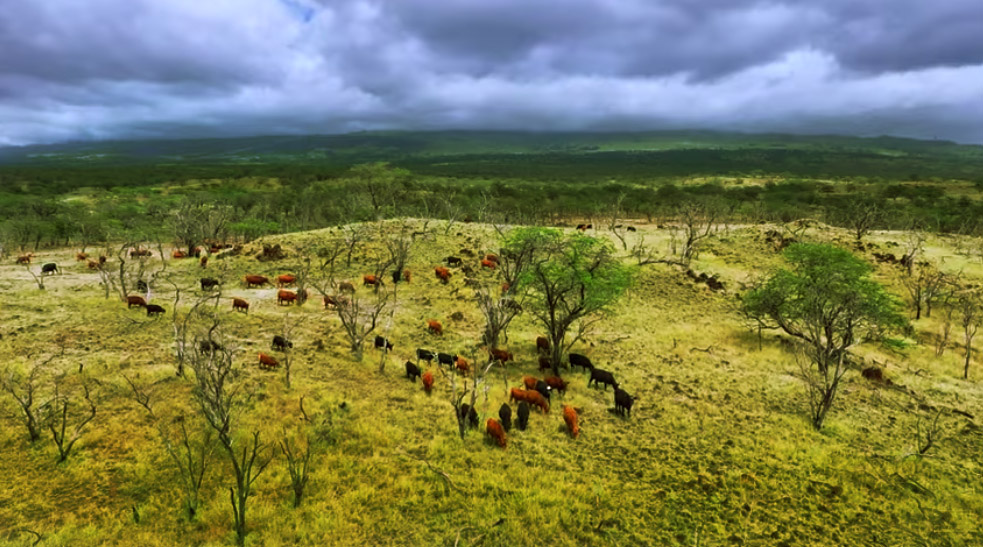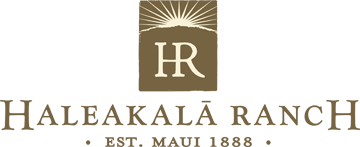
The surfer and the paniolo stand on the iconic green pastures of Haleakalā Ranch and look down at the azure waves breaking far below. They find they share a mutual bond in the ritual of looking mauka/makai every morning—the paniolo (cattleman) to check the “feed” or forage levels before moving the cattle, and the surfer to check the wave and wind conditions before paddling out.
Jordan Jokiel, vice president of land management at Haleakalā Ranch, and Ian Walsh, professional big-wave surfer, explore other similarities in a talk story session that is part of a fascinating new video campaign titled “Voices of the Outdoors.” Sponsored by the National Cattlemen’s Beef Association in collaboration with The Hawai‘i Beef Industry Council, the video series aims to highlight the often-undiscussed shared valued of cattle producers and the outdoor recreation community.
“We got on board with the series because we feel it’s important the public shares this greater awareness of how everything is connected, not just recreation but protection and conservation and stewardship,” Jokiel says.
As a ninth-generation kam‘aina-owned business, Haleakalā Ranch takes stewardship of the environment seriously. “With that comes this tie to the land, to the community that you gotta take care of these places,” Jokiel says.
“Absolutely,” Walsh agrees. “Surfers are passionately connected to preserving our oceans and our coastlines for future generations so they can use them and enjoy them the same way we have. A lot of times we become fixated on the ocean that we’re in, but when you actually turn around and look up at the mountains, everything feeds into both sides of it.”
Jokiel agrees: “The work we do up in these mid- to high elevations—whether it’s on a ranch, on a native forest, on a managed forest—there’s a connectivity directly to the ocean because whatever we do literally five miles within this watershed mauka affects your quality of water, everything.”
Growing up on Maui, Walsh says he has always looked back at Haleakalā Ranch lands to triangulate his position in the lineup. From the water, the open green spaces look effortless. But as Jokiel educates him on the careful ways the ranch manages the pastures, Walsh says he is amazed at “how methodical it is to piece it all together.”
Haleakalā Ranch uses their cattle wisely, monitoring them to ensure that each day they only take half the above-ground feed. “Then below-ground, half that amount roughly in biomass just sluffs off into the soil,” Jokiel says. “That contributes carbon and other things and it creates more vigorous growth above-ground.”
Haleakalā Ranch pastures are never tilled or fertilized, and the soil is extremely rich and high in carbon. As Jokiel points out: “We’re looking out at 6,000 acres of low fuel. How else are you going to do that? You’re either going to build a subdivision that’s paved and hardened with gutters and fire hydrants, build a golf course, or you’re going to mow it.”

As Walsh marvels at the expansive beauty of Haleakalā Ranch, he also appreciates the work that goes into running the ranch and its head of cattle. He shares his love of cooking and beef and he says he’s curious to understand: “Where does the beef come from? What is the process of that?” Understanding how Haleakalā Ranch works here on Maui is one more way to strengthen the connection between mauka and makai, preserving open spaces and pristine oceans for the surfers and paniolo of tomorrow.
